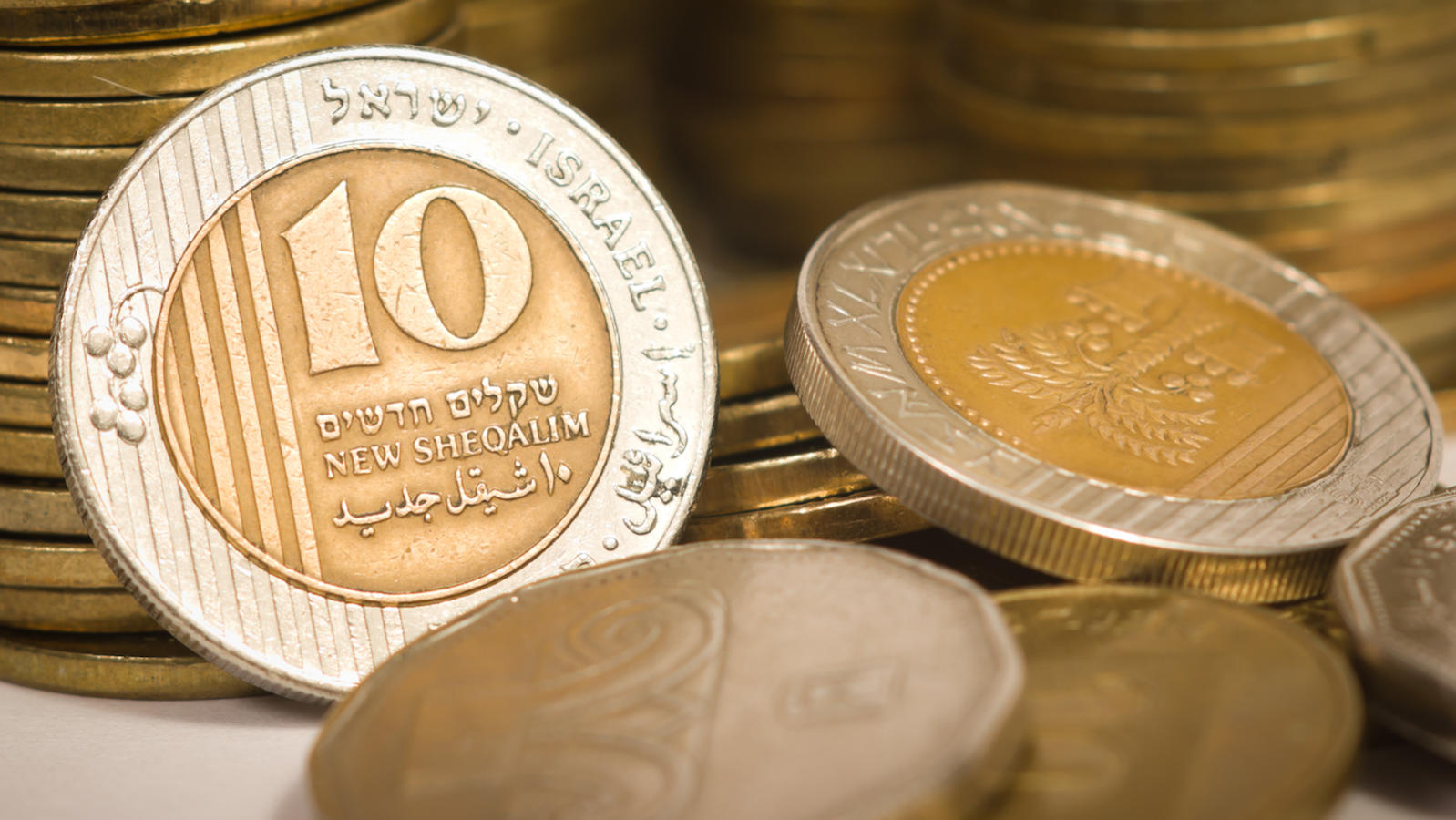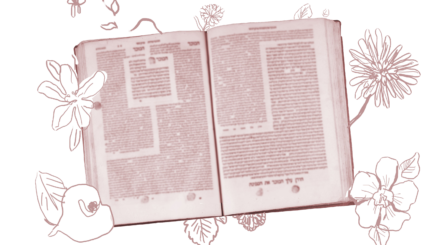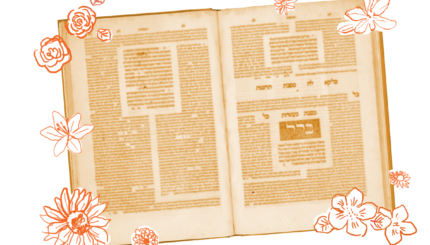Commentary on Parashat Ki Tisa, Exodus 30:11 - 34:35
Parashat Ki Tisa opens with God commanding Moses to take a census of the Children of Israel by collecting a half-shekel coin from each adult. The silver from these coins is to be used to make the sockets that hold the planks of the Mishkan, the Tabernacle that will be God’s sanctuary among the people (Rashi on Exodus 30:15-16).
The previous two Torah portions, Terumah and Tetzaveh, featured detailed instructions for the construction of the Mishkan and all its utensils. At the beginning of Parashat Terumah, God tells Moses to call for a donation of precious goods to be used in the project:
“…gold, silver, and copper; and turquoise, purple, and scarlet wool; linen and goat hair; red-dyed ram skins, tahash skins, acacia wood; oil for illumination, spices for the anointment oil and the aromatic incense; shoham stones and stones for the settings… (Exodus 25: 3-7)”
The silver half-shekel, which is to be used to make the very foundation of the Mishkan, is not proscribed until now, two portions later. What is unique about these coins that they are not listed with the other materials donated in Terumah?
Wealth in Egypt
The Midrash says that God showed Moses a half-shekel coin made of fire and said, “Like this one shall they give (Rashi on Exodus 30:13).” The Noam Elimelech explains that money is like fire; it can be used to create, protect, and nourish, or it can be used to harm and destroy. The silver half-shekel stands at the opening of our Torah portion as a warning of the potential dangers of wealth.
Many of the donations for the Mishkan came from the great wealth that the Israelites, following God’s command, requested and were given from their Egyptian neighbors as they were preparing to leave slavery.
In biblical times, Egypt, more than any other nation, was noted for its prosperity. The thought of Egypt evoked massive pyramids and palaces, heavily adorned with gold and precious materials. The yearly flooding of the Nile produced fertile soil that was farmed to feed vast populations. Not coincidentally, in the Book of Genesis, both Abraham and Jacob go to Egypt when there is famine in the Land of Israel.
A New Paradigm
Yet Egypt stands as the Torah’s prime symbol of the gross misuse of material possessions. “Woe to those who go down to Egypt for aid,” the prophet Isaiah says, “they did not turn to the Holy One of Israel and they did not seek out God (Isaiah 31:1).” Even though Egyptian wealth was sometimes used for good, feeding many in times of famine, the Egyptian relationship to wealth obstructs the awareness that God is the predominant power in the world.
Rebbe Natan of Breslov sees Egypt as the heart of materialism–pervaded by a lust for money so intense it became idol worship. According to the Midrash, Egyptians worshiped the sheep, a symbol of wealth (Exodus Rabbah 11).
Egypt’s massive construction projects deified the wealth from which they were built, and the kings and queens whose power ordained their construction. It was this spiritually toxic relationship with property that God wanted the Israelites to leave behind when they departed from Egypt.
Leaving, however, was not enough. God intended that through the Exodus, Israel would create a new paradigm of materialism in the world. Rebbe Natan explains: “Israel was exiled to Egypt in order to purify the wealth from there, because in the wealth… there fell all the [holy] sparks (Likutei Halakhot, Purim, 6:9).”
The Torah does not condemn personal possession, even great wealth, but demands a certain mode of usage. Riches do not exist for their own sake or for the sake of man’s ego. Rather, all the abundance of the earth is focused on the implementation of God’s will.
The Golden Calf
The elevation of the wealth of Egypt occurred through the construction of the Mishkan, which was built from the donations solicited at the beginning of Parashat Terumah. From a certain perspective, the opulence of the Mishkan and the Cohen Gadol, the High Priest, whose lavish clothing was also made from the donated materials, may seem ostentatious and elitist.
But the essence of all of this holy finery is that it originated in Egypt’s culture of acquisition and material perversion, and passed through the purifying fires of the hearts of the Children of Israel, who gave willingly, rather than hording the wealth. This transformation returned the idea of wealth to its essential state–as a means through which God’s in-dwelling Presence is made manifest in the daily lives of human beings.
However, the rectification of Egypt’s wealth did not proceed unhindered. Parashat Ki Tissa climaxes with the tragedy of the Golden Calf, the ultimate example of the Noam Elimelech’s destructive fire.
Just as they are poised to affect a worldwide paradigm shift, the Children of Israel stumble. Moses fails to appear in the moment he is expected, and the Israelites panic and demand a tangible representation of God’s power.
In contrast to the intricate details of the Mishkan–the viable channel for God’s glory–the Golden Calf was made haphazardly, after the people demand no more than, “Make us gods that will go before us!” The people celebrate the Calf, but their worship is empty worship; the golden statue is not a pathway to God.
Modern-Day Wealth
Unfortunately in our time we often see religious institutions with opulent external structures and well-paid clergy, but do not sense that these places are truly Tabernacles of God. Well-meaning congregants donate to the shul in exchange for a conspicuous honorary plaque, a personal parking spot, or an entire building bearing their name.
Yet, as contemporary commentator Dr. Aviva Zornberg points out, the most precious golden parts of the Mishkan–the Ark and the golden Cherubs resting on top of it–were not within view of anyone, ever, except for the High Priest on Yom Kippur, and to him only through the fog of incense.
In contrast, the Golden Calf, and the orgies that attended it, stood exposed before all the people (Rashi on Exodus 32:6). Proper use of material wealth sanctifies God’s name in a way that is modest–practically unseen–and yet affects the whole world for good.
Today, wealth is portrayed as a gateway to personal fulfillment, power, and status. Consumer products, from cars to clothes to personal electronics, promote a life that is generally a race for acquisition rather than a quest for righteousness and communion with God.
The conveniences of modern life have freed us to pursue more consumption, while spiritual and emotional fulfillment is at an all-time low, as evidenced by the meteoric rise of the self-help and anti-depressant industries. People are seeking wholeness and healing, but they are turning towards consumer products and profit-driven media to find them.
And yet we celebrate the Exodus from Egypt every year at Passover, as if we were free, without even realizing that the ultimate slavery is not chains and forced labor, but the deification of wealth and human achievement. All of Egypt was enslaved to perverse materialism, and it was for this reason that God decimated the land and sent Israel out with its wealth.
God commands Moses to collect the half-shekel in the context of a census. “Ki Tissa,” often translated as “when you count [the people],” literally means “when you lift.” The elevation of material possessions elevates each of us when we dedicate all that we have to the furthering of righteousness in the world.
The Jewish people was born out of the rejection of material worship, and charged with the mission of transforming the way societies view wealth. Were we to really embrace this spiritual work, we would undoubtedly be a light unto the nations, and offer a model for satisfaction in Divine service over gratification in material excess.
Suggested Action Items:
1. Dedicate your wealth in service of something that will elevate you and make God’s Presence manifest in your daily life
.
2. Choose to buy something that is better for the environment, even if it will cost more
.
3. Consider sponsoring a Torah and environment project through Canfei Nesharim.
Provided by Canfei Nesharim, providing Torah wisdom about the importance of protecting our environment.
shul
Pronounced: shool (oo as in cool), Origin: Yiddish, synagogue.
Torah
Pronunced: TORE-uh, Origin: Hebrew, the Five Books of Moses.



